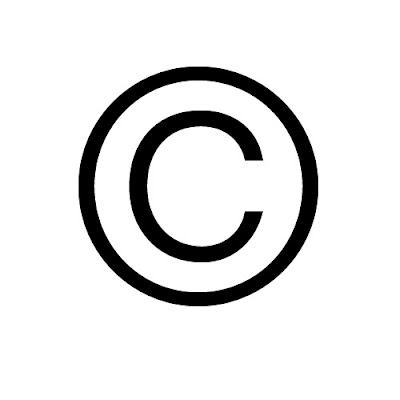
Once upon a time…
I went round to a stranger’s house and stole some of his property. But it wasn’t just any type of property. This stranger’s property was something he had created using his knowledge, skill, time, effort and money. He makes his living selling this type of property. It wasn’t much really; just property worth about £50-£100 on the open market. I was hoping for a happy ending and that I wouldn't get caught. And all was sweet for a while, and I was happily using the stranger’s property. Well today the stranger discovered that I had trousered his hard earned property, but suggested that I pay him for having used his property and nothing more would be said about the matter. Yes, you heard me (and I know you will find this as ridiculous as I do) he actually asked me to PAY for the use of his property! Unbelievable! But in these situations I always have a few cast iron get-out clauses to deploy.
I said, “sorry mate, I didn’t realise it was your property. Here, you can have it back because I don’t want it any more” (luckily he didn’t realise I’d been using his property for ages-tee hee). I thought that would be OK but he insisted on calling the rozzers to have me arrested and charged with theft. I thought this was totally out of order. After all he had his property back and I wouldn’t be using it anymore. To be honest, and purely as part of my strategy, I had been a bit rude to the stranger, calling him a “shit kicker” and a “troll”. For some reason he got a bit annoyed at this. Time, I thought, to deploy excuse number 2.
I said, “actually this property was given to me by a friend and I thought it belonged to him. He said he’d got it off the internet. It didn’t have your name on it so how was I supposed to know it belonged to you? It’s your fault that I am using your property because it didn’t have your name on it”.
Using such irreproachable logic, I thought, was sure to sort out this little misunderstanding. Oh no. Unbelievably, and beyond my comprehension, the stranger called me a thief and still insisted on getting Mr Plod involved. Time for phase three; the classic Charitable Status Ploy:
I said, “I’m using your property for a ‘not-for-profit’ project. Surely you can’t want payment for that. What, you think it’s a commercial project? Well as you can see from my website I am only ‘promoting’ something, I’m not making any money from it, not even from all the referral links and advertising other people’s (commercial) businesses”. I am afraid to say this stranger was a stickler and kept referring to something called “the law”. Well pardon me, why would he think I am subject to “the law”?
Time for phase four; the Inversion of Guilt Ploy.
This ploy is often used by men who are caught by a passer-by with their dicks out urinating against a lamp post. The correct Inversion of Guilt Ploy response in this example is, “what you lookin’ at” (pause to look the passer-by up and down with an expression of disgust)…”pervert”.
I said to the stranger, “actually, your attitude is very threatening to me, especially as I stopped using your property immediately I had been caught…eh...I mean you found out that I had been using your property, even though…eh…I didn’t know it was your property and it was really someone else who gave it to me after he got it off the …eh…internet”. That last bit didn’t go too well, but, hey, what the hell, by making the stranger look like the aggressor, rather than the aggrieved, I knew he would back down.
So there we are. I’m sitting pretty. I’ve been using the stranger’s property for quite some time for free, and he’s now feeling pretty bad because I’ve accused him of using aggressive behaviour by threatening to get the law involved. Admittedly my accusation is totally without merit, but I am in a bit of a tight spot here, and I’m going to do my damnedest to get away Scot free on this one. And I think I will…..unless the stranger picks up the phone and reports my crime…….
And they all lived happily ever after. The End.
Now just for a bit of fun substitute the word “property” in the above tale with the word “photograph”, or better still the words “intellectual property”. This particular fairy tale is based on a true story, and I have reversed my role for dramatic effect as a means of analysing the strange mentality of those who believe anything on the internet, if not entirely everything is “free”. I am the “stranger”, or more accurately the Photographer. The “law” is the Copyright, Designs and Patents Act 1988. The person who stole…eh…I mean “used” my photographs on his website shall be nameless to protect the “innocent” because he says his website is “not for profit”. My hand is poised over the telephone. Now where’s my lawyers number…..?







